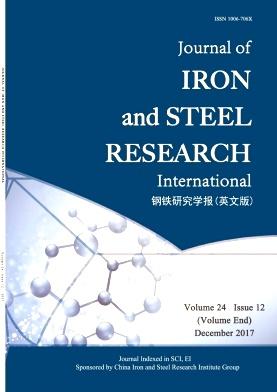Dynamic mechanical behavior of ultra-high strength steel 30CrMnSiNi2 A at high strain rates and elevated temperatures
Abstract
During high speed machining in the field of manufacture, chip formation is a severe plastic deformation process including large strain, high strain rate and high temperature. And the strain rate in high speed cutting process can be achieved to 105 s−1. 30CrMnSiNi2 A steel is a kind of important high-strength low-alloy structural steel with wide application range. Obtaining the dynamic mechanical properties of 30CrMnSiNi2 A under the conditions of high strain rate and high temperature is necessary to construct the constitutive relation model for high speed machining. The dynamic compressive mechanical properties of 30CrMnSiNi2 A steel were studied using split Hopkinson pressure bar (SHPB) tests at 30 – 700 °C and 3000 – 10000 s−1. The stress-strain curves of 30CrMnSiNi2 A steel at different temperatures and strain rates were investigated, and the strain hardening effect and temperature effect were discussed. Experimental results show that 30CrMnSiNi2 A has obvious temperature sensitivity at 300 °C. Moreover, the flow stress decreased significantly with the increase of temperature. The strain hardening effect of the material at high strain rate is not significant with the increase of strain. The strain rate hardening effect is obvious with increasing the temperature. According to the experimental results, the established Johnson-Cook (J-C) constitutive model of 30CrMnSiNi2 A steel could be used at high strain rate and high temperature.

 求助内容:
求助内容: 应助结果提醒方式:
应助结果提醒方式:


